Experimental Testing
Full-scale deep columns
Columns using deep wide-flange cross sections are typically seen in steel moment-resisting frames designed in seismic regions. A unique testing campagin was conducted to investigate the effects of boundary conditions, loading sequence, local web, and member slenderness ratios on the column hysteretic behavior. A total of 10 deep (W24/W610) 4-meter long columns were tested at the structures laboratory of EPM, Montreal, Canada using a 6-DOF control system. Read more details here.
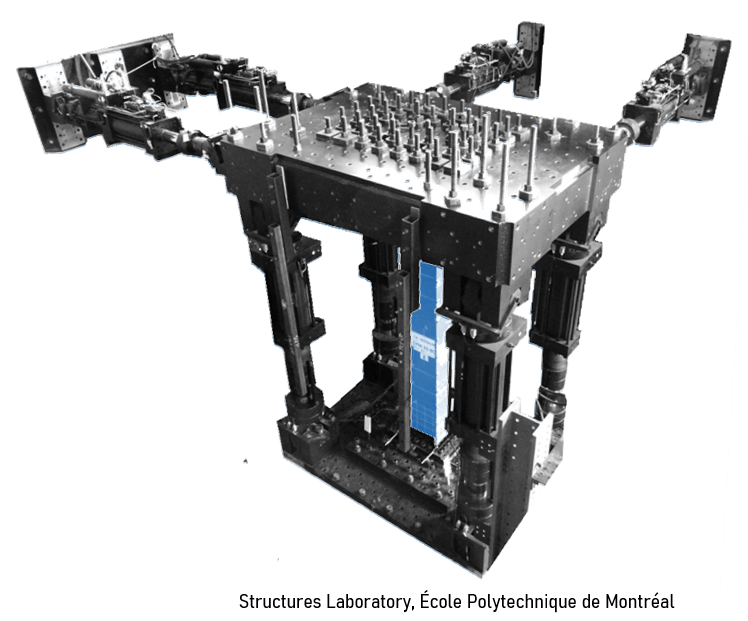
Large-scale deep columns
An experimental evaluation on the pre- and post-buckling behavior of 12 steel wide-flange cantilever columns under combined axial load and lateral drift demands was conducted at the Jamieson Laboratory in McGill Univeristy, Canada. The influence of several loading and geometric parameters, including the cross-sectional local web and flange slenderness ratios, applied axial load, and lateral and axial loading history on the performance of these columns is thoroughly examined. Read more details here.

Structural fuses for non-strutcural elements
Recent seismic events have showcased the vulnerability of non-structural components to even low- or moderate-intensity earthquakes that occur far more frequently that design-level events. Thus, critical facilities are often crippled for months despite having suffered little structural damage, clearly failing in the much-sought-after objective of resilience. This project’s objective is to offer a reliable and inexpensive solution for the protection of acceleration- and drift-sensitive equipment that underpin the functionality of nearly all buildings. An experimental campaign featuring an easily-modifiable specimen, replaceable sacrificial elements, and multiple input acceleration time histories from instrumented buildings to test the yielding fuse concept to satisfaction. The tests were conducted as part of SERA TA Project # 21, at the EQUALS Laboratory's shake table, Bristol University. Read more details here.
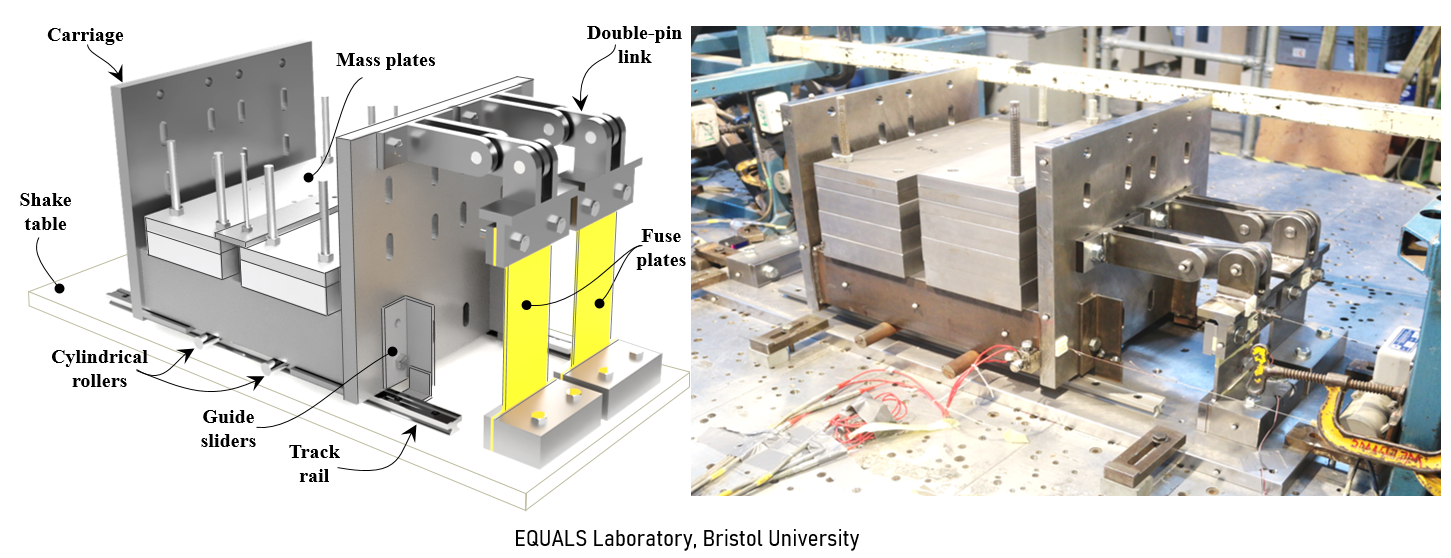
Steel T-stubs
An experimental campaign on T-Stubs behaviour investigating the evolution of plastic strains.
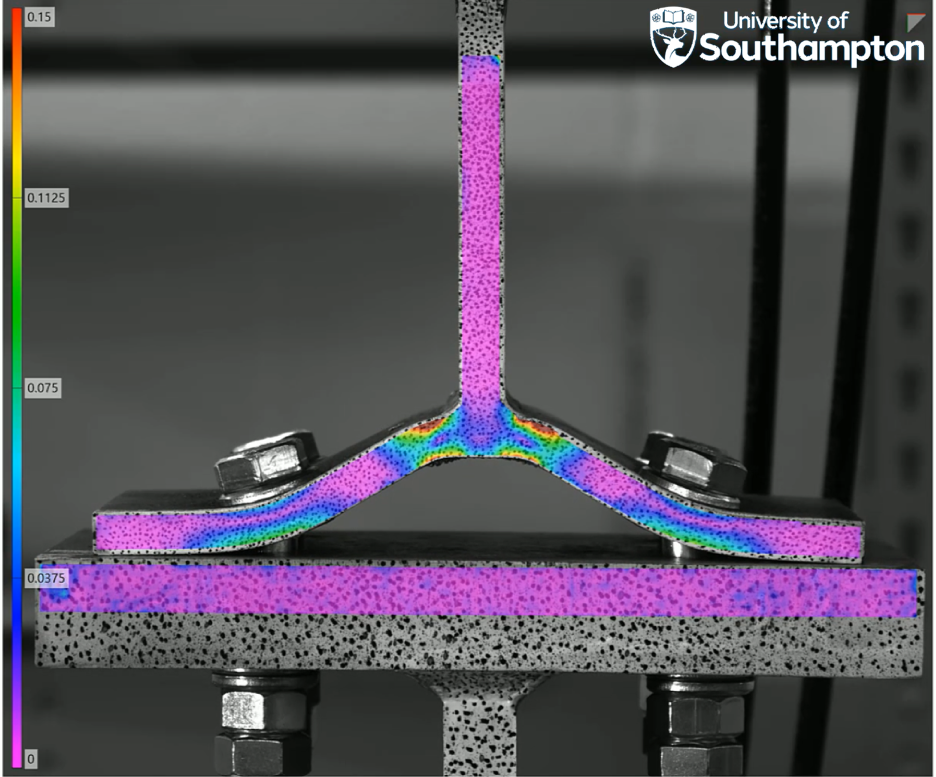
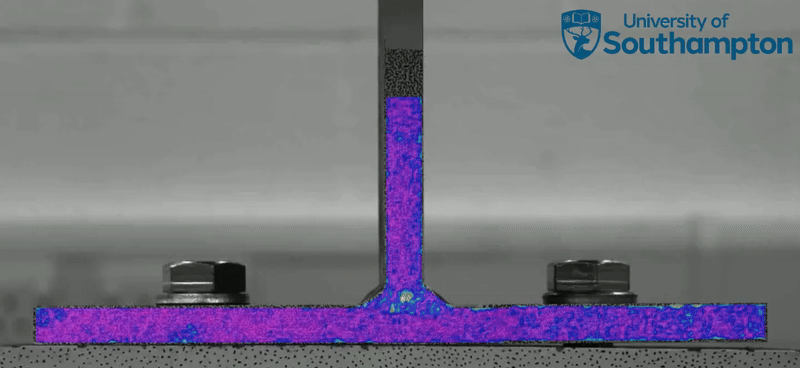
Glulam beams
coming soon ...
Numerical Models
I-shaped steel beam-columns
In nonlinear static and dynamic analyses, engineers commonly use the ASCE 41 nonlinear component modelling guidelines. Experiments on suggest that the ASCE 41-13 models do not adequately reflect the cyclic behaviour of wide-flange steel columns. To address this issue, a state-of-the-art empirical model was developed for the first-cycle envelope and monotonic backbone curves of steel wide-flange columns as well as the associated cyclic degradations in strength and stiffness. The new mode can be used with concentrated-plasticity models. The model accounts for the local and global slenderness, the influence of bidirectional lateral loading and varying axial load demands on the steel column’s hysteretic behaviour. Read more details here.
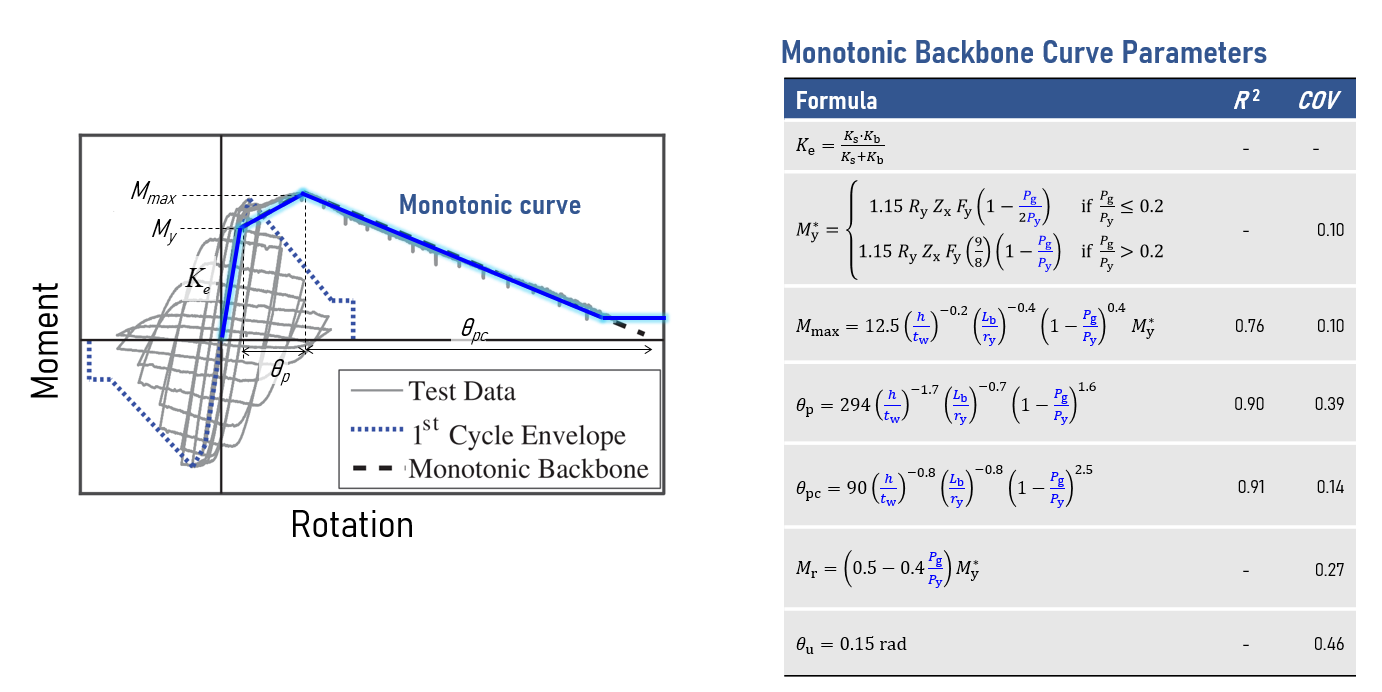
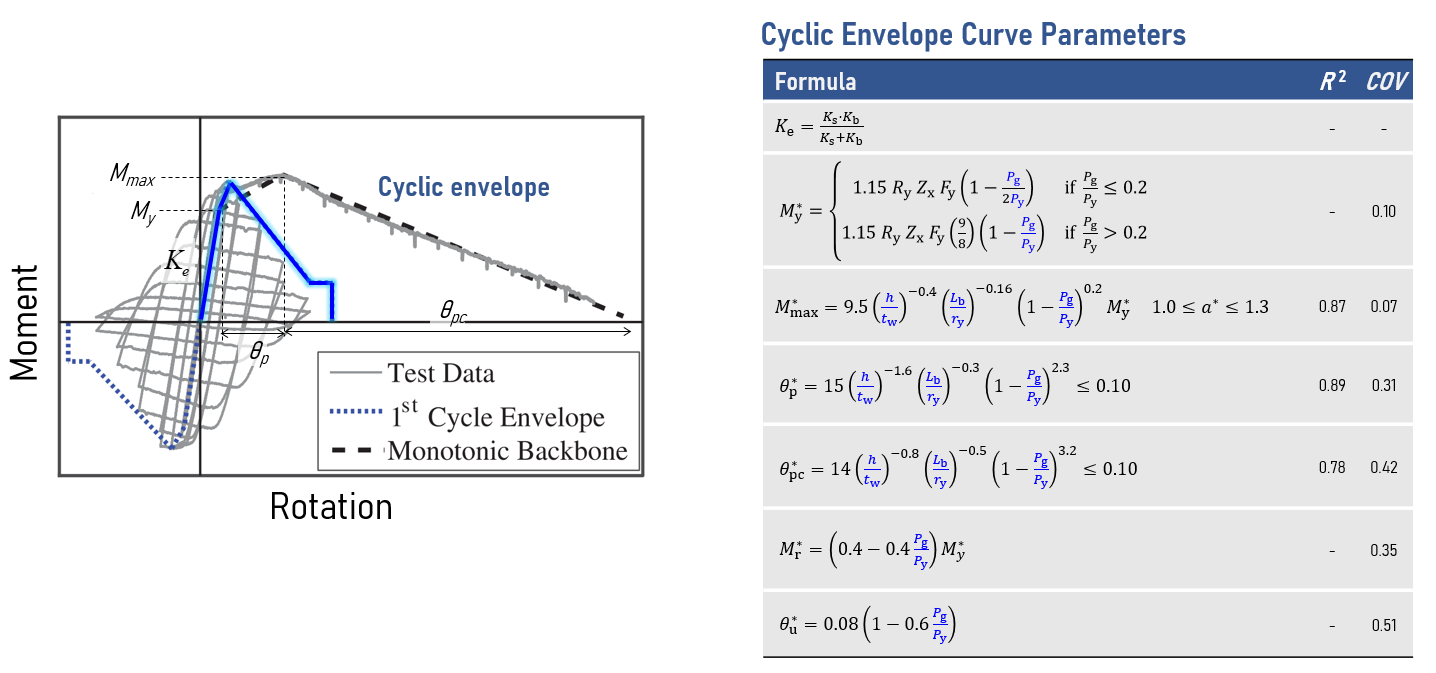
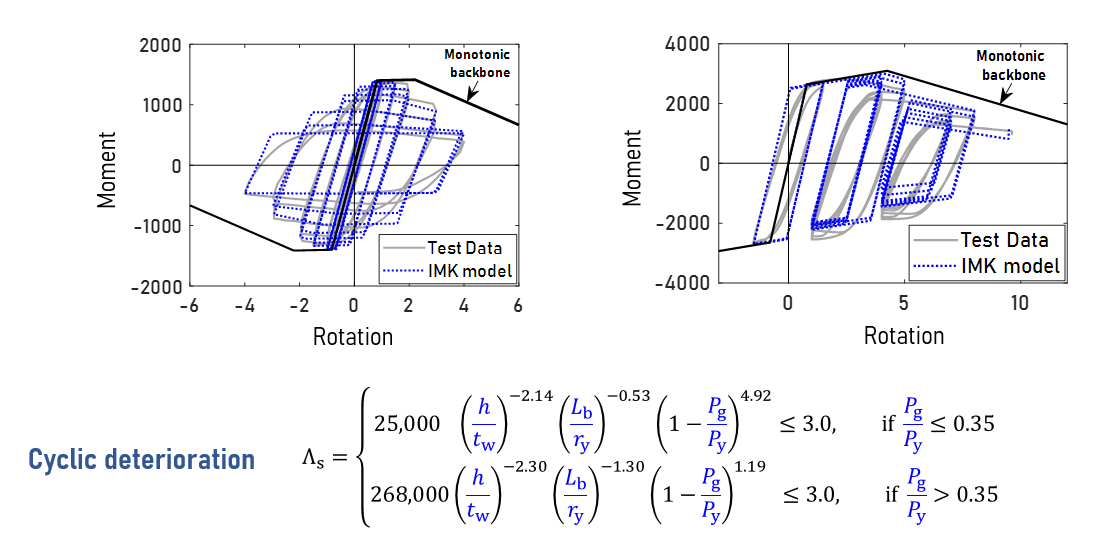
Axial shortening in steel beam-columns
Vertical residual deformations can occur in steel buildings as a result of the accumulated column axial shortening along the building height that is associated with local buckling. This can be equally important to horizontal residual drifts, particularly in high rise buildings subjected to long duration earthquakes. Using experimental and high-fidelity CFE simulation data, a simple empirical formula is developed to facilitate the computation of steel I-shaped columns. The formula relies on the column local slenderness, axial load, and cumulative plastic-rotation demands. The formula can be used with phenomenological models in large-scale parameterized nonlinear simulations. Read more details here.

Plastic hinge length in steel beam-columns
Steel beams and beam-columns are expected to developed plastic hinges at their ends under large rotations. Predicting the extent of the plastified zone is required to provide supplementary bracing along the plastified region as part of seismic design and to discretise steel members as part of distributed-plasticity numerical models. An empirical model is develop using test and simulation data to predict the plastic hinge length as a function of member slenderness, cross-section slenderness, and axial load. Read more details here.

Composite beams as part of beam-to-column connections
The structural implications of the composite action, arising from the composite connection of the concrete floor deck and the steel frame beams, is commonly ignored in system-level numerical simulations. To address, this issue a rational approach was proposed, based on collected experimental data, to account for the composite action in the beam macro-model. The model proposes modifications to the exiting moment-rotation backbone parameters of bare steel beams in fully restrained beam-to-column connections with reduced beam sections. The model takes into consideration the effect of the composite action on the stiffness, strength and ductility parameters of beams under hogging and sagging bending moments. Read more details here.
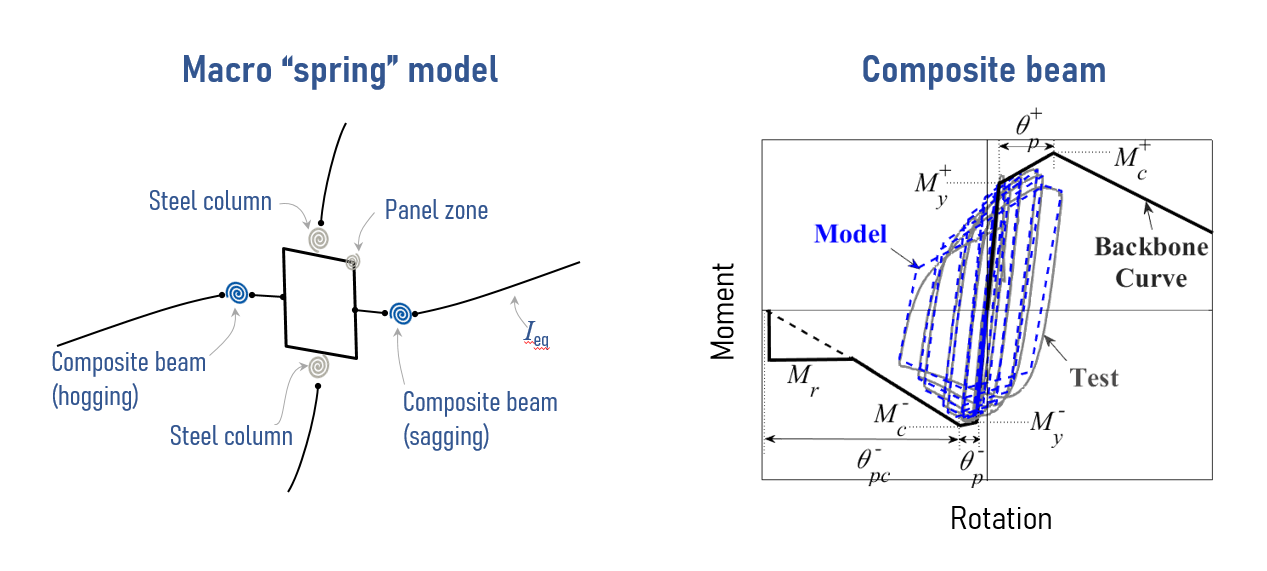
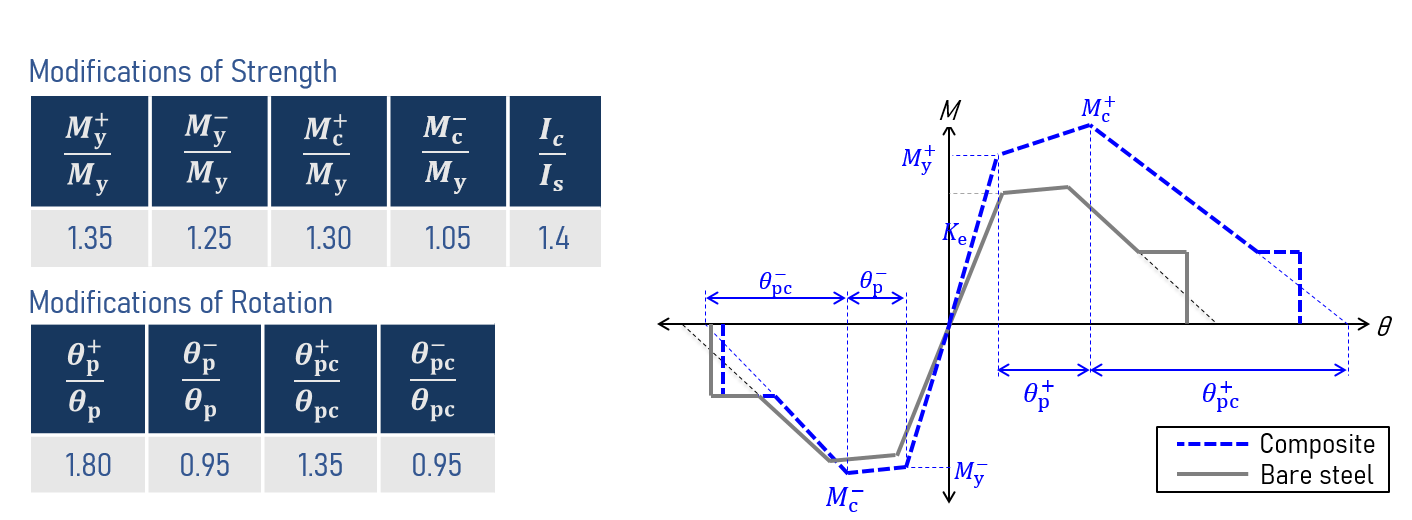
Steel column panel zone
In capacity-designed steel moment-resisting frame (MRF) systems, the panel zone joint may experience limited inelastic behaviour. Several recent studies proomoted further utlization of the panel-zone's stable inelastic reposnse while providing detailing guidlines to avoid brittle weld fracture. To capture this inelastic behaviour properly in numerical simulations and seismic designs, a new mechanics-based model of beam-to-column panel zone joints is proposed. The model is based on realistic shear stress distributions retrieved from continuum finite element analyses of representative panel zone geometries. The proposed model addresses the limitations of all other available models in the literature, and is able to predict the panel zone stiffness and shear strength with a noteworthy accuracy, even in panel zones featuring columns with thick flanges (thicker than 40 mm), as well as in cases with high beam-to-column aspect ratios (larger than 1.5). Read more details here.

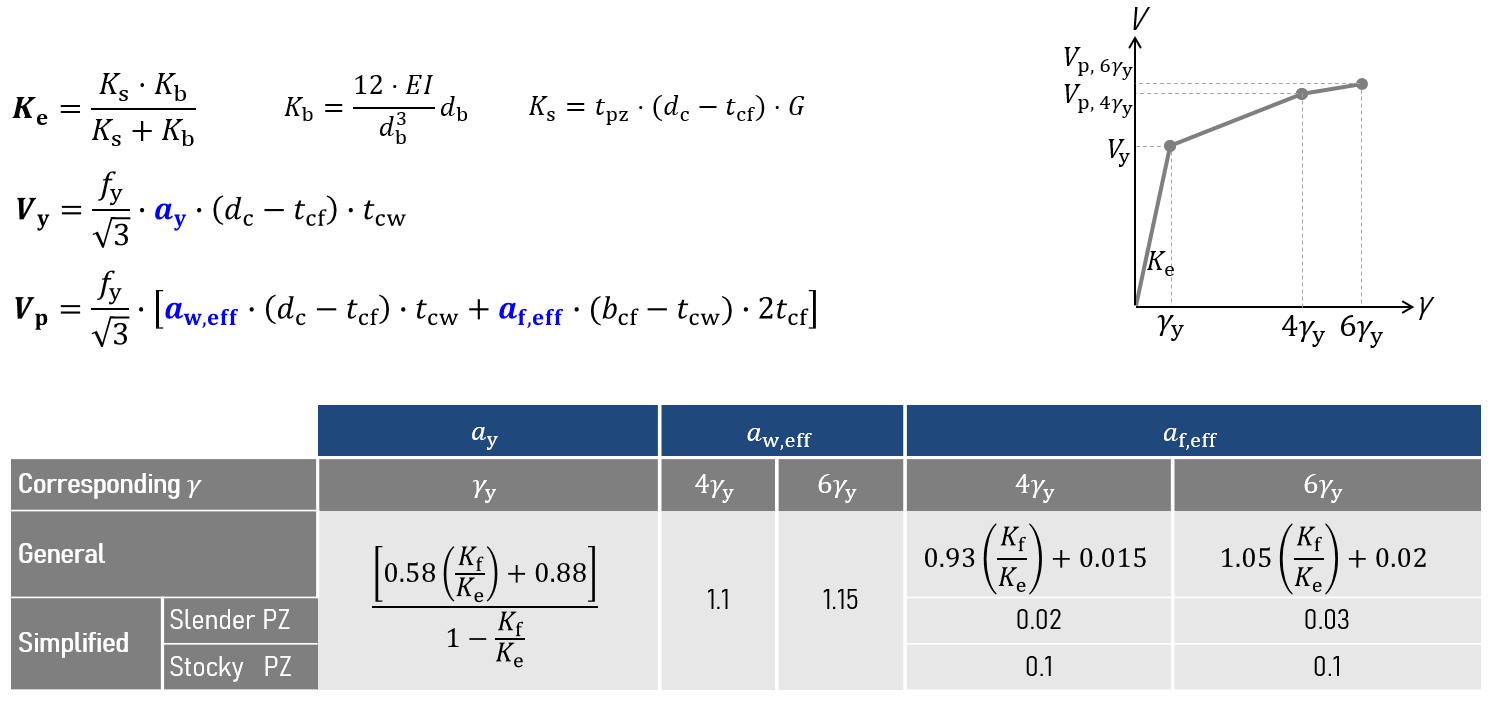
Steel flush endplate connections
Predicting the moment-rotation response parameters of semi-rigid steel connections can be challenging given the multitude of components that contribute to the connection’s elastic and plastic deformations. This applies to the popular bolted flush endplate beam-to-column connections (FEPC). The literature has highlighted the limitations of current analytical, mechanical, and empirical models in providing accurate predictions. Considering these limitations, the application of machine-learning methods in structural engineering, such as artificial neural networks (ANN), have gained wide attention recently in addressing problems associated with complex structural deformation and damage phenomena. The superior nonlinearity of ANNs is employed to predict the bilinear response (including hardening) of FEPCs using a dataset of more than 200 specimens. Read more details about this model here.. Download the GUI tool here.
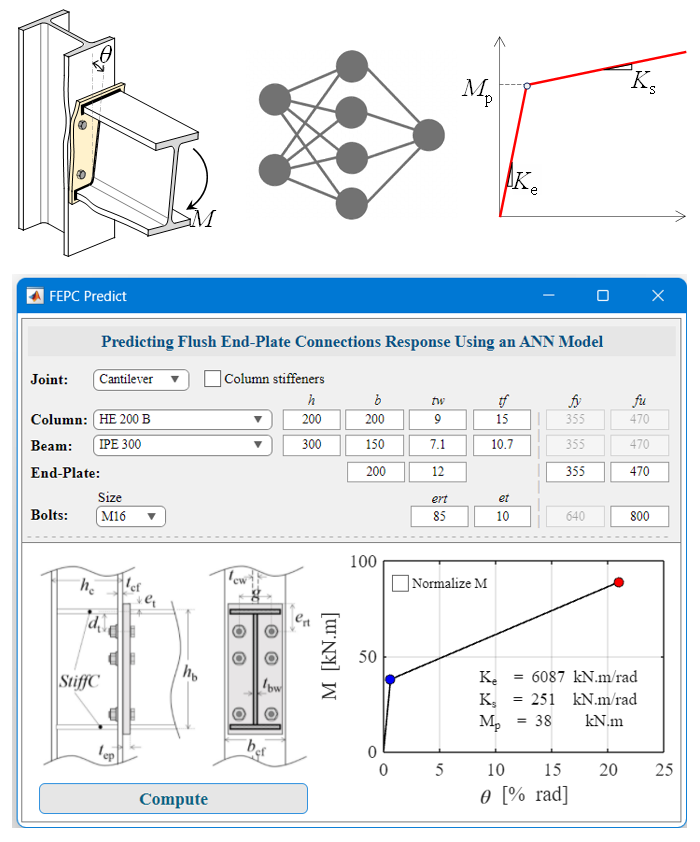
Partial-strength steel endplate connections
Accurate phenomenological rotational spring models are needed for robust system-level numerical simulations that employ the concentrated plasticity approach. Such models were missing in the litrature for partial-strength endplate connections. A new set of empirical models are developed to predcit the full-range moment-rotation backbone response of such connections, including the post-failure response. The models are developed based on regression analysis using a dataset of more than 3400 specimens. The models are consistent, in definition and format, with those found in existing modelling guidelines/standards such as ASCE 41. They also include uncertainty metrics to assist with probabilistic simulations. Read more details about this model here.. Download the GUI tool here.
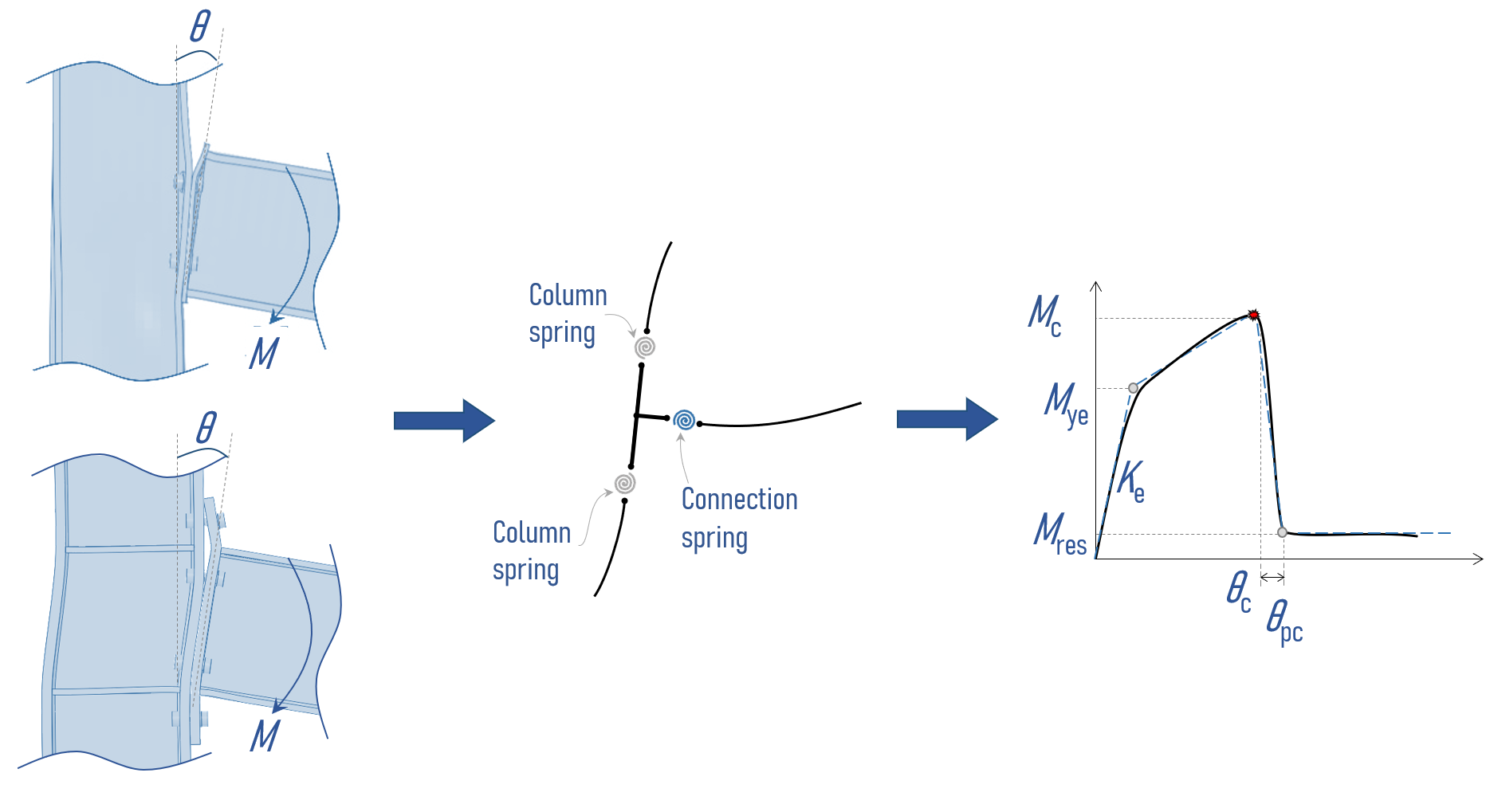
Steel extended endplate connections (Classification and Hysterisis)
A mutlitude of deformation modes can occur individually or simultaneously in extended endplate connections. Identifing the governing deformaation mode is essential for assessing damage, quantifying the associated losses, tuning design, and characterizing the connection’s cyclic behavior. To that end, a classification model is developed based on the Random Forest algorithm to identify the probability of occurance for each possible deformation mode as a function of the connection material and geometric parameters. Empirical guidance is further provided to characterize the pinched hysteretic behaviour of the connection as a function. Read more details about this model here.. Download the GUI tool here.

Steel bolts
In most bolted steel connections, bolt rupture under tensile forces is a primary failure mode under extreme deformations. Characterizing the bolt response up to failure is necessary for the proper quantification of connection ductility. A generalized empirical model is developed to predcit the full force-elongation response of steel bolts as a function of thier grade, grip length, thread length, diameter, etc. The models are developed based on regression analysis using an experimental dataset of 200 high strength bolt specimens. The models includes uncertainty metrics and can be used in both continuum finite element simulations as well as mechanical component-based models. Read more details about this model here.. Download the GUI tool here.
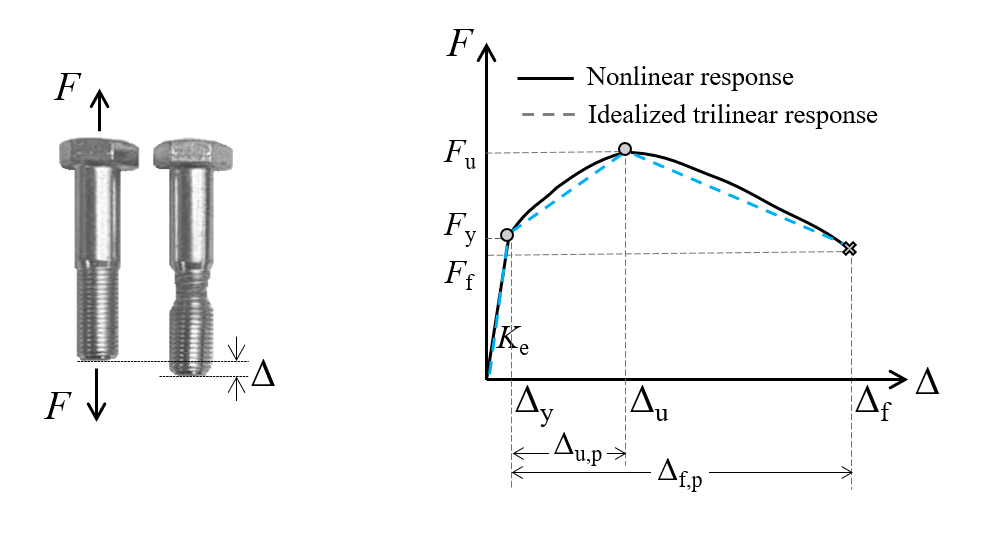
Open-Source Databases
Steel wide-flange columns
This repository contains test data sets, in .txt format, from two experimental programs on steel wide-flange columns tested under monotonic and cyclic lateral drift combined with constant and varying axial load demands. The data includes the moment-rotation hysteretic response at the column base as well as the history of the column axial shortening. Please refer to the Elkady & Lignos (2018). and Cravero et al (2020). for details about the testing programs and the basis for the measured test parameters. Access the data here.
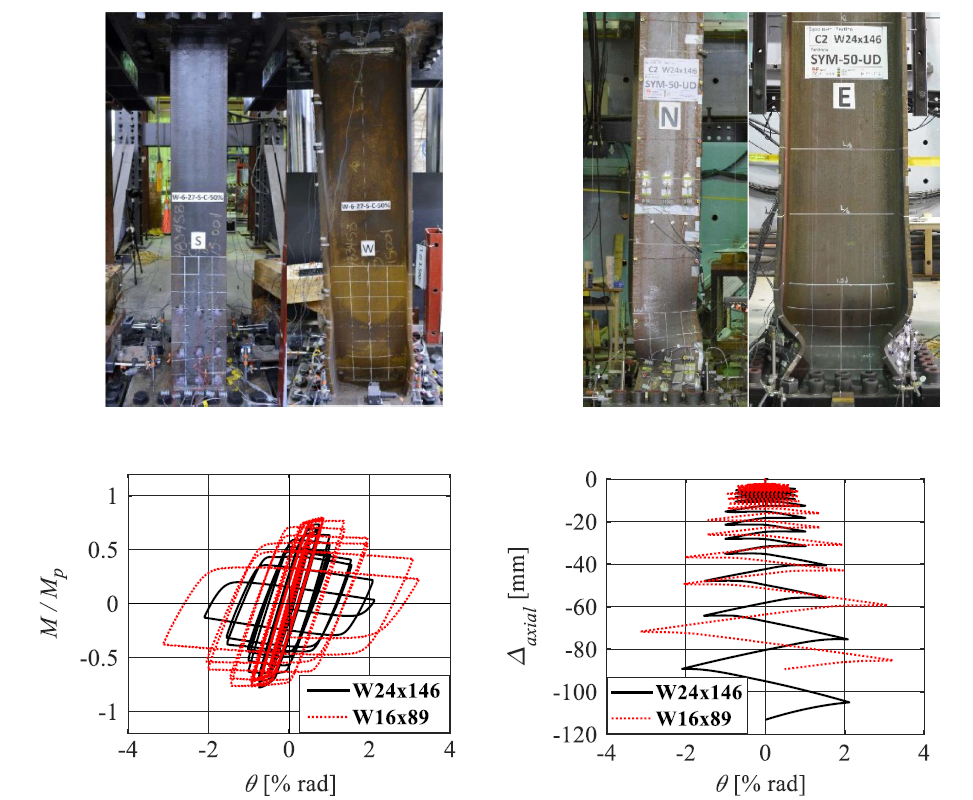
Flush endplate connections
A comprehensive experimental database of bare steel and composite flush end-plate (FEP) connections, covering tests conducted within the past 6 decades. The database includes deduced and tabulated parameters defining the configuration, geometric and material properties, and observed deformation and failure modes for more than 570 test specimens. The database also includes the specimens’ monotonic/cyclic responses in the form of digital moment versus rotation data. Please refer to the Mak & Elkady (2021). for details about the testing programs and the basis for the measured test parameters. Access the data here.
